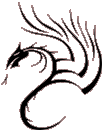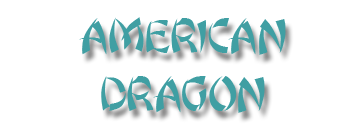 |
 |
 |
 |
"Zang Fu Syndromes:
Differential Diagnosis and Treatment"
Orest V. Pelechaty
Acupuncture Physician, Oriental Medicine Doctor
The American Acupuncturist Update
Oriental Medicine Doctors John McDonald and Joel Penner have provided us with a handy reference book both for the busy practitioner of acupuncture and the beginning level professional TCM herbalist.
As the Preface tells us, this textbook was originally written for the use of the students and teaching staff of the Department of Traditional Chinese Medicine at New South Wales College of Natural Therapies. It will likely prove very useful to many students and faculty of other TCM colleges in the English speaking world. The major source in the preparation of this book was a Chinese text entitled "Zang Fu Zheng Shi" (Study of Zang Fu Syndromes) printed in 1980 by Tianjin Science and Technology Publishing House. Other material was incorporated to round out the work for Western training practitioners of Chinese medicine.
Since this book is designed to cover a specialized area in Traditional Chinese Medicine diagnosis, some assumptions have been made about the readers' knowledge of basic Traditional Chinese Medicine theory. The discrimination of patterns, and the accurate distinction of diagnostic criteria for such assessment, are fundamentals which the authors expect their readers to have "under their belt". For example, familiarity with the process of Phlegm Formation and the causes and effects of Stagnation of Qi, Stagnation of Blood, Stagnation of Food and Damp Stagnation are assumed.
This work will be a valuable addition to the primary text material in the English speaking world, and also an invaluable resource for the OM practitioner in the clinical setting. Through use of the indexes, the practitioner will find this book helpful in refining his/her TCM diagnosis. Overall, the delivery of information is efficient, with a Five Phase structure for the Zang Fu syndromes, a separate chapter on Complex Syndromes, and complemented with very lucid charts and tables.
As co-author Penner states: "The indexes have been organized in order to make this volume user friendly both for the student and the practitioner." This is a great feature of the book. The Symptom index may be helpful in refining a diagnoses, but should not be a substitute for the practitioner's own knowledge and ability to generate an appropriate Zang Fu diagnosis. Similarly, the Treatment sections are not intended as a "cookbook" approach to treatment, but rather as a broad outline of the range of commonly used herbal formulae and acupuncture points that may be considered in the treatment of a particular condition. Final selection of the most appropriate points or herbs must be based upon a thorough working knowledge of the structure of Traditional Chinese Medicine as a whole. The Treatment sections provide a solid starting point for selection of points and herbal formulas, and thus can assist a student in either study or review. It is hoped that many OM schools will pick this up as a good textbook for their TCM programs.
Almost half of the book is devoted to herb formulas, although the section is almost omitted in the table of contents. Actually, the number of typos for a first printing is rather small, as the quite short errata page attests. Formulae are listed by Pin Yin, with characters and English name below. This is followed by 'also known as' then each constituent is listed in Latin and Pin Yin, with dosage ranges and actions. These summaries of constituents seemed not so much short as elegant. The formula's actions, syndromes, and clinical manifestations follow, with sections on treats, modifications, and contraindications. The 'treats' section offers tantalizing short hand glimpses into documented Western biomedical applications for each herb formula, hinting at the proven clinical potential of our medicinals. Finally, the 'modifications' section was kept short , so as not to burden the text with undue length.
Taking an example, we find the practical skill of the authors at work. Let us look at GUI PI TANG. In the 'Treats' Section it includes:
|
Neurasthenia
|
Post-concussion
syndrome
|
Congestive
heart disease
|
|
Anemia
|
Allergic
Purpura
|
Functional
Uterine Bleeding
|
|
Duodenal
ulcer
|
Menorrhagia
|
Chronic
Bleeding
|
|
Nervous
Exhaustion
|
Personality
Disorders
|
Myasthenia
Gravis
|
|
Melancholy
|
Thrombocytopenic
purpura
|
Chronic
gonorrhea
|
|
Cervicitis
|
Gastric
Ulcer
|
Aplastic
anemia
|
|
Uterine
cancer
|
Supraventricular
tachycardia
|
This list surely opens one's eyes to a wider range of modern therapeutic application for this classic formula.
In the constituents for section for this same Restore the Spleen Decoction (Ginseng and Logan Combination) we see Radix Codonopsis listed parenthetically as a substitute of Rx. Ginseng at the appropriately expected dosing range of triple the weight. No mention is made of the nuances of these medicinals and that there is a long-standing debate about whether Dang Shen can ever really replace Ren Shen energetically. My herbal medicine mentor Dr. Lee taught us that it can indeed do so in this particular formula, if need be. Such a nuance of discussion is typically not in the style of this text. However, another parenthetical entry, Scl. Poria Pararadicis is discussed as a possible replacement for Scl. Po ris Cococs. In this case, Fu Shen's special differences from Fu Ling are concisely noted, allowing the practitioner the option to improve the focus of the formulation.
This book can easily serve as a daily reference for most English speaking clinical practitioners of TCM. The graphics are spare but handsome throughout. Especially worthwhile are the 'flow chart' type diagrams, which can be a great boon to students. It is a fine example of the kind of texts we need in place for the field of Oriental Medicine to grow and mature into full doctorate status.
==== Back To Reviews Index ====